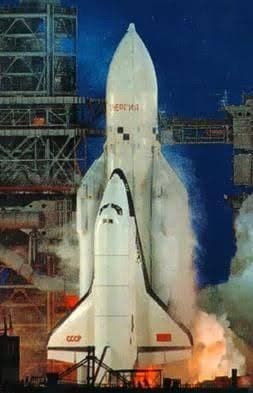Buran is a spacecraft developed by the Soviet Union in the 1980s, when this country was undergoing a period of cold war with the United States (US). Its development had stalled, but is now being continued by Russia.
Buran in Russian means blizzard, the space shuttle was designed to respond to NASA’s program. The development of the Buran has not yet been 100 percent, but the first flight was carried out in 1988.
Aboard the Energia rocket, on November 15, 1988, Buran successfully orbited around Earth and returned to the launch site. The flight was carried out in automatic mode, with no crew on board.
Aircraft repeatedly used
In 1970 US engineers decided that the era of one-way space flight was over. Now is the time to design a plane that can land on Earth after going into space, and then be used again.
Masterclass.com explains that when the US launched the Space Shuttle Columbia in 1981, the Soviet Union read it as a military threat because a reusable spacecraft could carry a lot of cargo.
The Soviet Union also believed US-made spacecraft could be used to capture Soviet satellites, or deliver the first nuclear strike.
The Soviet Union tacitly allowed the Buran space shuttle program, from that moment state engineers began work on its development.
Buran’s Destination
One of the goals of the Buran project was for the existence of the Soviet Union in the world’s space arena.
In addition, the Soviet Union aimed to conduct research and help provide supplies for the Mir space station. However, the Soviet Union’s space agency also hoped to eventually use the Buran for military purposes, including arms deliveries.
The Soviet team of engineers intended to design a spacecraft completely different from the US one. However, when they did the experiment, they recognized that many elements of NASA’s design were ideal, as quoted from Space.
The space shuttle Buran featured a super-heavy rocket called Energia. The aircraft consists of four thrusters and one core chamber.
The Energia rocket serves as the launch vehicle that carries the Buran into orbit. This is different from NASA, which uses an integrated main engine.
While this made the Soviet Union’s space shuttle less reusable, the Buran had the advantage of being able to carry three times as much cargo as NASA’s shuttle.
Even so, in the end the Buran could only carry 30 tons of cargo, while the American plane was only able to carry 24 tons of cargo. The comparisons assessed are not much different.
Although Buran was a new technological breakthrough, the project cost a fortune over the decades in its development. In total the Energia Buran project cost more than 16 billion rubles or Rp. 3.3 trillion.
Because it was considered too expensive, the project was finally stopped in 1990, and officially closed in 1933. Five Buran aircraft have been produced, two of which are stored in Russia and Kazakhstan.
The Buran space shuttle was an ambitious Soviet project to rival the United States
The Buran Space Shuttle program was an ambitious project of the Soviet Union to rival the US. When the US through its NASA space agency developed the space shuttle, the Soviet Union saw it as something that could be a military threat to the countries that were members of the Soviet Union.
Reported by CNN in his article entitled “”Two abandoned Soviet space shuttles left in the Kazakh steppe”, the NASA space shuttle is a space “truck” capable of transporting large payloads into space at the request of the Pentagon which has plans to launch its military satellites.
In addition, the Soviet Union was worried that the NASA space shuttle would also be used to carry advanced weapons such as lasers to destroy ballistic missiles in space or even to carry nuclear bombs that could be aimed directly at the center of the government and military of the Soviet Union.
Because of the potential military threat from the NASA space shuttle, the Soviet Union also had ambitions to have a plane that had the same capabilities as the NASA plane.
The decision to build Buran was a response to the military threat that NASA’s space shuttle could pose. When the Buran space shuttle finally became public in 1988 during its launch, its physical and functional similarities to NASA’s space shuttle were slowly revealed and became apparent.

